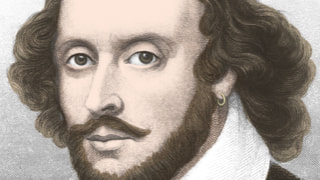Symbols are objects, characters, figures, and colors used to represent abstract ideas or concepts.
Poison
In his first appearance, in Act 2, scene 2, Friar Lawrence remarks that every plant, herb, and stone has its own special properties and that nothing exists in nature that cannot be put to both good and bad uses. Thus, poison is not intrinsically evil, but instead it's a natural substance made lethal by human hands. Friar Lawrence’s words prove true over the course of the play. The sleeping potion he gives Juliet is concocted to cause the appearance of death, not death itself, but through circumstances beyond the Friar’s control, the potion does bring about a fatal result: Romeo’s suicide. As this example shows, human beings tend to cause death even without intending to. Similarly, Romeo suggests that society is to blame for the apothecary’s criminal selling of poison because while there are laws prohibiting the Apothecary from selling poison, there are no laws that would help the apothecary make money. Poison symbolizes human society’s tendency to poison good things and make them fatal, just as the pointless Capulet-Montague feud turns Romeo and Juliet’s love to poison. After all, unlike many of the other tragedies, this play does not have an evil villain, but rather people whose good qualities are turned to poison by the world in which they live.
Thumb-biting
In Act 1, scene 1, the buffoonish Samson begins a brawl between the Montagues and Capulets by flicking his thumbnail from behind his upper teeth, an insulting gesture known as biting the thumb. He engages in this juvenile and vulgar display because he wants to get into a fight with the Montagues but doesn’t want to be accused of starting the fight by making an explicit insult. Because of his timidity, he settles for being annoying rather than challenging. The thumb-biting, as an essentially meaningless gesture, represents the foolishness of the entire Capulet/Montague feud and the stupidity of violence in general.
Queen Mab
In Act 1, scene 4, Mercutio delivers a dazzling speech about the fairy Queen Mab, who rides through the night on her tiny wagon bringing dreams to sleepers. One of the most noteworthy aspects of Queen Mab’s ride is that the dreams she brings generally do not bring out the best sides of the dreamers, but instead serve to confirm them in whatever vices they are addicted to—for example, greed, violence, or lust. Another important aspect of Mercutio’s description of Queen Mab is that it is complete nonsense, albeit vivid and highly colorful. Nobody believes in a fairy pulled about by “a small grey-coated gnat” whipped with a cricket’s bone (1.4.65). Finally, it is worth noting that the description of Mab and her carriage goes to extravagant lengths to emphasize how tiny and insubstantial she and her accouterments are. Queen Mab and her carriage do not merely symbolize the dreams of sleepers, they also symbolize the power of waking fantasies, daydreams, and desires. Through the Queen Mab imagery, Mercutio suggests that all desires and fantasies are as nonsensical and fragile as Mab and that they are basically corrupting. This point of view contrasts starkly with that of Romeo and Juliet, who see their love as real and ennobling.

Take the Themes, Motifs, and Symbols Quick Quiz

Dive into our comprehensive guide to ace your Shakespeare assignments



 payment page
payment page


